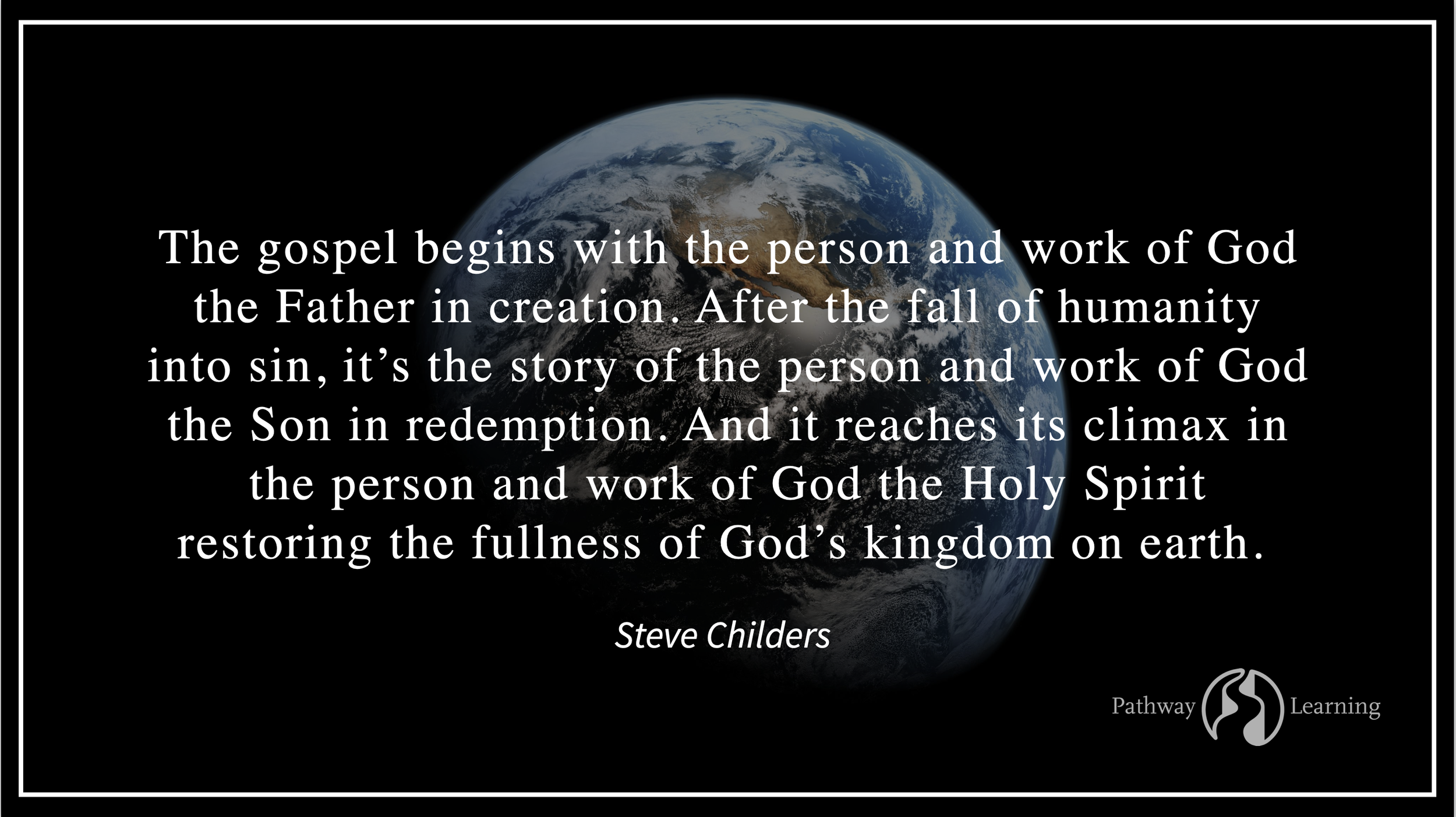God’s Triune Nature and Work: Perspectives Series Part 3
Series: Perspectives in Theology, Part 3
Authors: Dr. John M. Frame and Dr. Steven L. Childers
Title: God’s Triune Nature and Work
God’s Triune Nature: Who God Is
The attributes of God’s simplicity and complexity in Scripture reveal his mysterious, triune nature–what is traditionally called the doctrine of the Trinity.
The Bible teaches that God is one God (Deut 6:4, 1 Cor 8:4). But, in many places, the Scriptures also ascribe divine attributes and actions to three divine entities which the church has historically called “persons”, the Father, the Son, and the Holy Spirit. Christian orthodoxy affirms throughout the ages that each of these three is the one true God.
Although the Scriptures teach that God’s being is one, this does not mean that God is only one person who can be described in three ways or forms. The ancient heresy of Modalism (sometimes called Sabellianism) teaches that God is one person who reveals himself in three ways (modes, forms, or manifestations), e.g. the belief that sometimes God reveals himself as Father, at other times the same person reveals himself as Son, and at other times he reveals himself as Holy Spirit.
In the Bible, the three “persons” are always distinct from one another and not interchangeable. The Father sends the Son (John 3:16); the Son prays to the Father (John 17); the Son obeys the Father (John 5:19); the Father and the Son send the Spirit into the world (John 14:26, 15:26); the Spirit speaks on the authority of the Father and Son, not on his own authority (John 16:13).
God’s Triune Work: What God Does
In Scripture, each member of the Trinity reveals unique aspects of his person and work in the history of God’s unfolding plan for the world. For example, in Ephesians 1, the Apostle Paul refers to the Father’s will before creation (1-5), the Son’s accomplishment of God’s will in redemption (6-10), and the Spirit’s application of God’s will in sealing believers (11-14).
In this series, we’ll explore what the Bible reveals to us about who God is as Triune Lord (his attributes) and what God does as Triune Lord (his work, his plan) in creation, redemption, and the restoration of all things. Here’s a brief survey:
The Father Establishes God’s Plan for Creation
It is the Father, not the Son or Spirit, whose knowledge establishes God’s plan for the world and authorizes the tasks that the Son and the Spirit will carry out in his plan. In creation, God the Father reveals his supreme authority as Lord over all things, by wisely establishing his eternal plan to rule over all humanity and the world he creates for his glory.
Humanity Rejects God’s Plan in the Fall
But humanity rebels against God’s rule, sinning against him. As a result of the Fall, all humanity and creation come under God’s just curse. Although the Fall resulted in humanity’s condemnation and the corruption and distortion of God’s good creation, it did not destroy it. And by his grace, God determined to redeem and restore all things lost in the Fall.
The Son Accomplishes God’s Plan in Redemption
It is the Son, not the Father or Spirit, whose power accomplishes God’s plan for the world by executing it through his life, death, resurrection, ascension, and return. In redemption, God the Son reveals his sovereign control as Lord of all things, by mightily accomplishing God’s eternal plan to redeem all of fallen humanity and creation.
The Spirit Applies God’s Plan in Restoration
It is the Spirit, not the Father or the Son, whose presence fulfills God’s plan for the world by applying Christ’s redemptive work to all things lost in the Fall. In restoration, God the Spirit reveals his transforming presence as Lord in all things, by graciously applying God’s eternal plan to restore all of fallen humanity and creation for his glory.
God’s Triune Gospel: Who God Is and What God Does
The gospel is the revelation of who God is and what God does in creation and redemption. The gospel story begins with the person and work of God the Father in creation. After the fall of humanity into sin, it’s the story of the person and work of God the Son in redemption. And it reaches its climax in the person and work of God the Holy Spirit restoring the fullness of God’s kingdom on earth.
While no single definition of the gospel can do it justice, the gospel can be summed up as the good news that the Father’s creation, ruined by the Fall, is being redeemed by Christ and restored by the Holy Spirit into the Kingdom of God. In the gospel we see the nature and work of the Triune God reestablishing his kingdom on the earth after the Fall.


